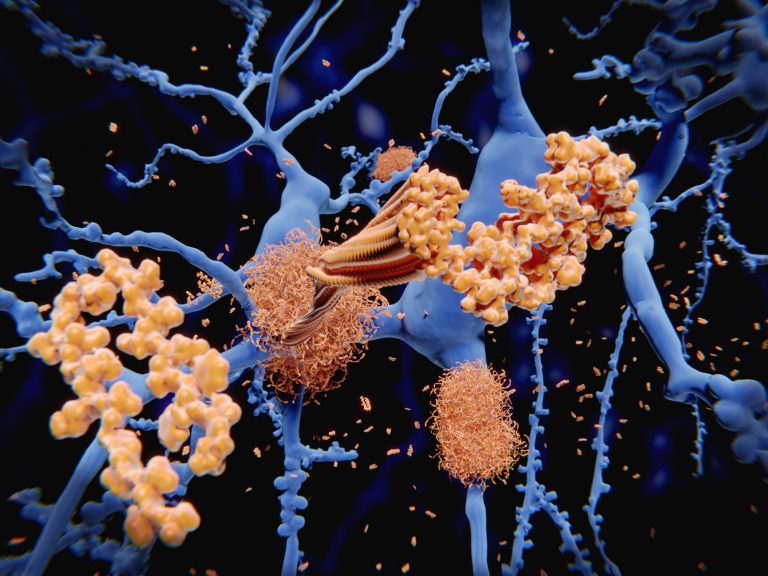
Researchers have spent significant time and resources seeking to better understand how brain plaque—aided by the accumulation of beta-amyloid and tau proteins—contributes to Alzheimer’s disease and what role they play in disease progression.
Recent studies have found that beta-amyloid has antiviral and antimicrobial properties, suggesting a potential link between the immune response against infections and the development of Alzheimer’s disease.
Now researchers at Sloan Kettering Institute have uncovered clues to this potential link by identifying a protein called IFITM3. The protein which is involved in the immune response to pathogens has been discovered to play a key role in the accumulation of beta-amyloid in plaques.
Their findings, “The innate immunity protein IFITM3 modulates γ-secretase in Alzheimer’s disease,” is published in the journal Nature.
“Innate immunity is associated with Alzheimer’s disease, but the influence of immune activation on the production of amyloid-β is unknown. Here we identify interferon-induced transmembrane protein 3 (IFITM3) as a γ-secretase modulatory protein, and establish a mechanism by which inflammation affects the generation of amyloid-β,” the researchers wrote.
Yue-Ming Li, PhD, a chemical biologist at Sloan Kettering Institute explained: “We’ve known that the immune system plays a role in Alzheimer’s disease—for example, it helps to clean up beta-amyloid plaques in the brain. But this is the first direct evidence that immune response contributes to the production of beta-amyloid plaques—the defining feature of Alzheimer’s disease.”
IFITM3 is a protein that in humans is encoded by the IFITM3 gene. The researchers’ discovery shows that IFITM3 alters the activity of an enzyme called gamma-secretase, which chops up precursor proteins into the fragments of beta-amyloid that make up plaques.
The researchers observed that removing IFITM3 decreased the activity of the gamma-secretase enzyme and, in turn, reduced the number of amyloid plaques that formed in a mouse model of the disease.
IFITM3 was also found to be increased in a subset of late onset Alzheimer’s patients, meaning that IFITM3 could potentially be used as a biomarker to identify a subset of patients who might benefit from therapies targeted against IFITM3.
Moving forward, the researchers plan to investigate how IFITM3 interacts with gamma-secretase at the molecular and atomic levels and how it is involved in neuroinflammation in animal models. They will also explore IFITM3 as a biomarker for the disease.













